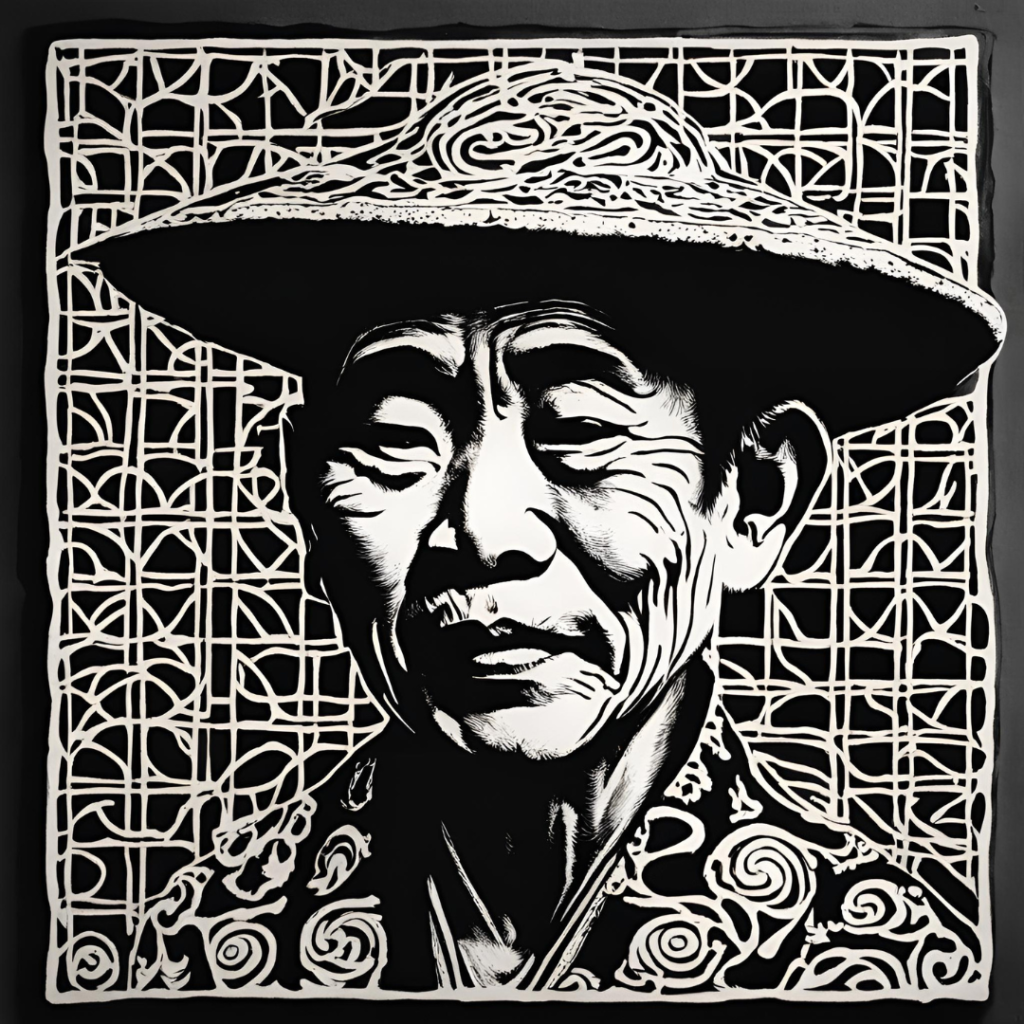Greetings 15th Generation 比嘉 栄照(Higa Eisyou)

During the Ryukyu Dynasty, we made bingata textiles worn by samurai and above.
However, with the dissolution of the royal court, demand from the upper class disappeared, and we took on a new challenge by making inexpensive furoshiki wrapping cloths and other items for the common people. Even so, our craftsmen lived in poverty, and had to fetch their own food from the sea every day.
And before we had the opportunity to rebuild, World War II broke out and our workshop was completely burned down.

Amidst the devastation following the war, one of the people who worked hard to revive Bingata was Higa Eisho, the 13th generation of our family. I heard that together with his friends, he picked up scraps and gathered usable materials, and made a frantic journey to the mainland to collect stencil patterns that had survived the war. He started afresh with a single stencil pattern he received from the mainland, and to date, over 1,000 stencil patterns have been made by hand by artisans. This is how Ryukyu Bingata has continued to be preserved. We are faced with the mission of passing on this beautiful dyed fabric to the next generation, and will continue to create works that will add color to your everyday lives.
| Year | Contents |
|---|---|
| 1634 | The founder, Eisyou, originally worked in a dyeing workshop, but later became independent and opened a workshop making bingata dyeing patterns. |
| 1636 | They began producing bingata kimono, which were worn by samurai and above. |
| 1703 | In the mid-Edo period, he developed his own unique techniques, and demand for his work increased. |
| 1879 | With the dissolution of the royal court, demand from the upper class disappeared, so as a new challenge, they began producing inexpensive furoshiki wrapping cloths and other items for the common people. |
| 1944 | The entire workshop was burned down, so he rushed to the mainland to collect patterns, and started anew with a single pattern he received from the mainland. |
| 1964 | The 10th generation Eisyou is attracting attention with his works that combine traditional dyeing techniques with new designs. |
| 2009 | New dyes and designs are being incorporated to modernize traditional dyed fabrics, with floral and landscape patterns being particularly popular. |
| 2012 | They now accept orders online, providing beautiful kimonos to customers all over the world. |
| 2021 | He achieved success in fashion shows both at home and abroad, gaining worldwide fame. |
